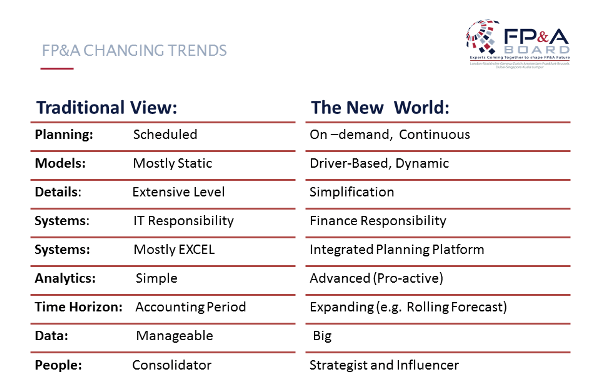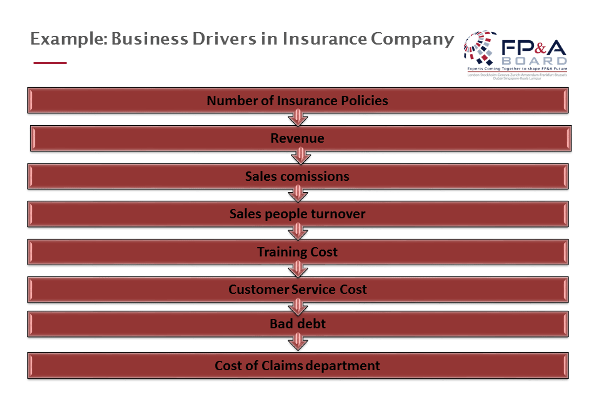 On 12th October 2017, 22 senior finance practitioners from such companies as Ericsson, IDG (International Data Group), Lagardére Sports, MSD, Nutricia, Philips, Pirelli, Regus, Salesforce, Telia, Tieto, etc., gathered in Stockholm to interactively discuss why Driver-Based Planning matters for modern FP&A. The discussion was thought-provoking and interesting: many finance practitioners considering fully driver-based planning model, however, just a few organizations have them.
On 12th October 2017, 22 senior finance practitioners from such companies as Ericsson, IDG (International Data Group), Lagardére Sports, MSD, Nutricia, Philips, Pirelli, Regus, Salesforce, Telia, Tieto, etc., gathered in Stockholm to interactively discuss why Driver-Based Planning matters for modern FP&A. The discussion was thought-provoking and interesting: many finance practitioners considering fully driver-based planning model, however, just a few organizations have them.
Let me walk you through some discussion points of the meeting.
The new world of FP&A: what’s it like?
The new world of FP&A requires on-demand continuous planning process, where various business scenarios can be played almost in real-time.
The driver-based planning model is the best practice methodology where financial plans incorporate assumptions about business activities which are modelled to drive financial data outputs.
When your models are fully driver-based, the scenarios are immediately re-forecasted by changing the input drivers, both external and internal by literally “pushing the button”.
In other words, the drive-based planning provides a more accurate picture of the expected future business performance by planning and monitoring the key operational activities that drive these results. Moreover, this picture is very dynamic and can be almost immediately adjusted by changing the assumptions or drivers.
The below slide summarizes all the features of the “New World FP&A”.

Practically all of them very much depends on the quality and flexibility of the driver based planning model.
Namely, from the new world perspective, planning is on demand and continuous, models are driver-based and dynamic, extensive details tend to be simplified, technology becomes finance rather than IT responsibility with integrated planning platforms used. Analytics becomes more advanced and pro-active with the expanding time horizon typical of the Rolling Forecast. FP&A people operating with big data acquire a new role of Strategists and Influencers rather than mere Consolidators.
That is why driver-based modelling is a fantastic tool to develop forward-looking plans quickly by leveraging cause and effect relationships.
What is Driver-Based Planning (DBP)?
This is an approach that bases financial forecasts and plans on operational drivers or activities. The driver-based modelling allows us to identify correlations and the “cause-effect” relationships between independent drivers and dependent outcomes. This is a fantastic tool to develop forward-looking plans quickly and dynamically by leveraging this “cause and effect” relationships.
What is a Driver?
Very simply it could be described as an operational cause with a financial effect.
Both financial and non-financial as well as internal and external drivers should be taken into consideration for driver-based modelling.
Some of the examples of internal drivers:
- Number of Customers at an Average Rate
- Headcount by Grade
- No of Cycles, Trips, Events etc
Some examples of external drivers:
- Oil price
- Exchange rates
- Weather conditions, etc
The below slide gives an example of the key driver (the number of Insurance Policies booked) in the Insurance industry.

The concept of driver planning is not new and the majority of the organisations use drivers for their models. Activity-Based Costing concept was very popular 10-15 years ago and still continues to be important for modelling of organisational costs.
However, all those models are in reality only partially driver-based. Many large organisations are still using drivers only for planning revenues and variable costs and continue to use static planning methods for many lines of P&L.
In fact, the traditional planning models are so detailed and static that it is next to impossible to do any sensitivity or scenario analysis with their help. At least it will require a lot of time and efforts.
When I ask the members of the International FP&A Board about the fully driver-based planning model, I see that only a few have already incorporated it in FP&A.
Therefore, although the concept is old, in the world of traditional planning it was used only partially. However, DBP is the basis for many important techniques in modern FP&A.
Why Driver-Based Planning matters for modern FP&A?
DBP matters because it is an essential tool in supporting your company's performance management in this incredible environment of constant change. The quick and dynamic re-planning and re-forecasting are the must nowadays.
Moreover, DBP helps to maintain the forward-looking approach and therefore helps to transform the business culture from judgemental to more analytical. As a result, good driver-based models help to improve the quality of FP&A.
The approach also enhances collaborative planning and supports FP&A’s with their business partnering tasks.
Furthermore, DBP helps to decrease the time spent on non-value adding activities. According to on one of the studies, an organisation spends an average of 20,000 person days a year or $10 million in cost on budgeting per billion dollars in revenue. (source: Axson, David. The Management Mythbuster.)
Speaking of the important FP&A methods and concepts DBP is a basis for, let us have a look at the slide below.
Group Work: DBP Maturity Model
The Board members value the opportunity to network with their peers from the leading organisations. This time they enjoyed the suggested group work on developing the basics of DBP Maturity model from the aspects of culture, people, models and systems, processes, etc.
The results of the group work can be summarised in the following recommendations:
- Data collection should be automated
- Get more people involved in contributing less data more frequently
- Use Drivers as the language of performance
- Get sponsorship for change from the top
- Implementation in phases
The work on DBP Maturity Model will be finalised with the Singapore FP&A Board and presented to you at the next article.
Conclusions
The fourth Stockholm FP&A Board has arrived at the following conclusions:
- DBP method is the basis for effective Rolling Forecast
- It allows for easy scenario planning, enables quick decision making
- This is a basis for predictive analytics
- It helps with Integrated Business Planning
- DBP facilitates changes in business culture.
What is required for the implementation of DBP methods in the companies:
- The mind shift change: from biases to analytics, from political games to collaboration
- Investments: both in systems and people.
We will continue the DBP discussions around the globe.
About FP&A Board
The London FP&A Board was created on 19th September 2013 to guide the development and promotion of best practices in financial planning and analysis (FP&A). Since then, FP&A Board chapters have successfully been established in 27 cities of 16 countries in Europe, the Middle East, Asia, Australia and North America in order to identify and support new global trends, skillsets, and thought leadership in FP&A.
Our Sponsors
We are very grateful to our sponsors and partners Adaptive Insights, the recognized leader in cloud corporate performance management (CPM), and Michael Page, one of the world's leading professional recruitment consultancies, for supporting the event.
Stay in touch with our global FP&A community through the FP&A Club LinkedIn Group and the FP&A Trends resource. Please do not hesitate to join and to contribute to the discussions, posts, and commentaries.

